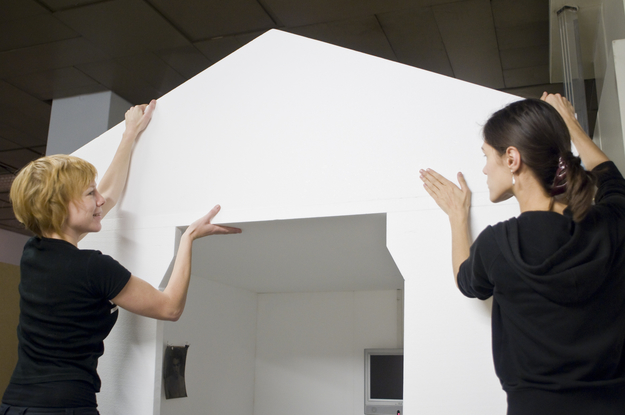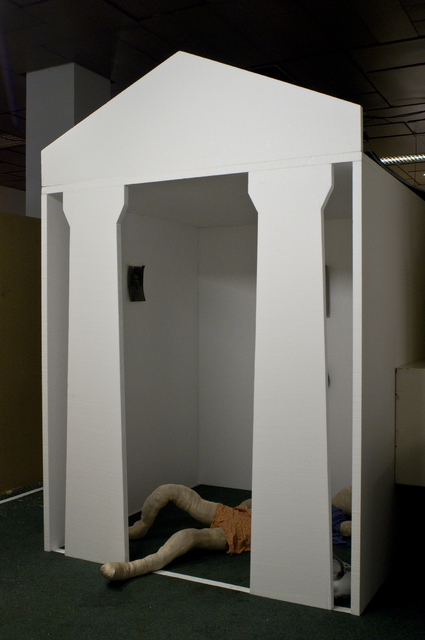The famous Russian poet Alexander Poeshkin had a lot of affairs and many of his mistresses inspired him to write the greatest lyrical poems. But the times have changed and new generations of women have taken on the role of artist, rather than that of muse. The curators from the St. Petersburg pavilion -Katja Sokalova and Olga Jitlina- were fascinated by that and began to think about what inspires the woman artist. Olga Jitlina explaines.
Why did you choose this subject for the pavilion?
‘Yes, does it seem strange to you? The whole Western history of gender relations is quite different from Sovjet-history. We didn't have the feminist revolution in the sixties. Gender roles are different in Russia as well. The Russian woman is considered to be a strong figure, because she had to be. In the twenties there was a lot of propaganda for feminism issued by the government. Women were officially considered to be equal to men and they were allowed to have a job. After the Second World War there weren't many men anymore because they died in the war, so the women had to do all kinds of work. After Perestroika in the eighties a strong 'femaleness' appeared. It was probably even too much. High heels, really dressed up. We wanted to hand over the topic of changing gender relationships to young Russian female artists and see the results.’
Did the Russian women need emancipation as much as the European women did?
‘Yes, because we do have all these problems, even now. A husband who is an alcoholic, a woman who has to work for both. He is drinking alcohol off her salary, and she also has to care of the children. At some point Russian women need emancipation, and the Russian men too.’
Why didn't you make a pavilion about the emancipation of men?
‘Male emancipation is a topic of a certain class in society. We could do it, but it wouldn't be very natural for us because we don't come from families with such problems.’
There are a lot of stories about alcohol abuse in Russia. Why do people drink so much?
‘Working-class people drink because their situation is often hopeless. After Perestroika people lost their jobs and weren't paid salary for nine months. During the Sovjet-regime alcoholism was something of the creative people and the intellectuals, because they didn't had the hope of making a career. Poets and artists made underground culture, organised exhibitions inside their flats, met together, got drunk and died.’
What are you going to show in your pavilion?
‘Our pavilion is going to be a classical temple because St. Petersburg is mostly built in classical style. It is also a temple for the man, who inspires as a muse. Amsterdam was a muse for St. Petersburg in a sense. In the temple we show the video's, photo's and sculptures of several young female artists.’
Is there freedom of expression in Russia? Can you say whatever you want to say?
‘There's a group of people who make a critical newspaper, called “What's to be done”, which is very popular in the West, but they never have any exhibitions in Russia. There is also a young group that does the same. This summer young activist-artist Artem Loskutov from Novosibirsk was arrested because they did dadaistic actions named Monstrations during demonstrations organised by the government.’
Can you tell me a bit about the artistic scene in St. Petersburg? Is there an underground scene?
‘It's hard to tell what's underground. There was a strong underground in the eighties, but now there isn't. Three or four years ago art suddenly became very fashionable. People wanted to spend a lot of money on art, and many new magazines and institutions were founded. There was a new class of nouveau riches and they wanted to show off their status by buying old houses, expensive cars and art. The problem of Russian art is that it is made for rich people who want something to put on their walls. However, there is some socially and politically engaged art in St. Petersburg, and I hope it will not become dangerous to make it.’


